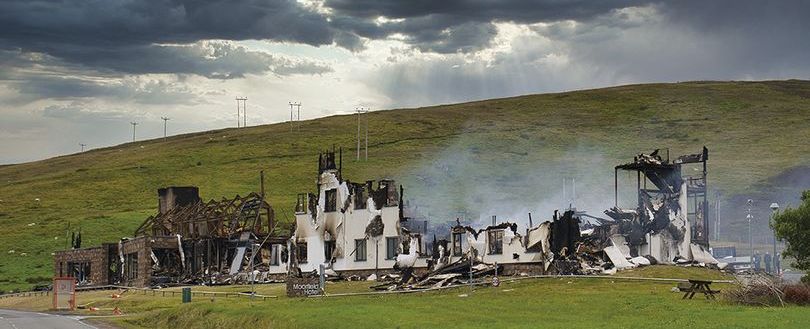
Calls for More Research into Fire Safety in Modular Construction
Like it? Share it!
09 December 2024
Two recently published reports highlight the need for further investigation into the fire-safety performance of volumetric modular construction (VMC).
A government-commissioned study by Harlow Consulting and Edinburgh Napier University reveals a critical gap in fire testing, stating there is no standardised fire-test method specifically designed for volumetric construction. Consequently, existing testing practices may fall short of what’s needed.
VMC, also referred to as category 1 modular construction, is a modern method of construction (MMC) where three-dimensional units are prefabricated off-site and later assembled on-site. The approach is gaining traction among Whitehall departments, including the Ministry of Defence, due to its potential to accelerate project timelines, reduce waste, and lower costs.
Two years ago, the National Fire Chiefs Council (NFCC) called for dedicated safety regulations and legislation for MMC, and for it to be explicitly included under the Building Safety Act. While the government did not implement these recommendations, it introduced a new standard for homes built using MMC.
The Harlow Consulting and Edinburgh Napier report, published last week, states:
"While there is insufficient evidence to suggest whether a fire is more or less likely in a modular building compared with a traditionally constructed building, the event of a serious fire is likely to result in more serious consequences in a modular building if the choice has been made to use combustible elements in the voids and cavities through which fire and smoke can travel quickly – unless these risks are mitigated via appropriate design, manufacture and installation.
"Further research is critical to have a clearer understanding of how materials (and combinations of materials/components) behave in modular buildings in the event of a fire, to feed into [the] development of a standard fire testing methodology for volumetric construction.”
Additionally, the Health and Safety Executive/Building Safety Regulator (HSE/BSR) has released a research paper identifying several fire-risk concerns associated with VMC. These include improperly installed or missing cavity barriers, defects in fire doors, unsealed penetrations in compartment walls, and hidden voids. However, the report acknowledges:
"Some of these issues could also relate to other (non-VMC) builds and there is no evidence to suggest whether the frequency of the issues would be higher or the consequences of the issues more severe in relation to VMC compared to other types of construction.”
The HSE/BSR paper references notable incidents, such as the 2020 fire that destroyed the Moorfield Hotel in Shetland, a timber modular building. It suggests future steps might include fire and structural testing of modules in configurations that better represent real-world contexts, such as stacked modules or hybrid structures.
"Testing should include timber VMC to determine the nature of potential risks of VMC overlapping with the potential building safety risks of timber structures. Such tests might have implications for existing buildings and may inform any urgent concerns about PVMC [prefabricated volumetric modular construction],” the report notes.
An NFCC spokesperson commented:
"We recognise the role MMC can have in helping to deliver more homes quickly and sustainably. However, NFCC is concerned that MMC buildings are being designed, approved and built despite a lack of understanding about their performance.
It is vitally important to make sure that products and technologies are safe for use, including their likely performance in a fire, before they are used in the built environment. Not only is this important for safety but it also helps to protect leaseholders from unnecessary costs that can arise when buildings need remediation, or interim measures, including provisions like waking watches."
Last year, Construction News raised similar concerns about whether government measures at the time were sufficient to ensure the safety of MMC buildings. The Harlow Consulting and Edinburgh Napier report, which also addresses procurement and project management in MMC, was finalised in July 2022 but only published last week. Meanwhile, the HSE/BSR report, based on research conducted up until October 2023, was also released last week.
View the source.
Our eNews provides regular insight into industry trends, news headlines, and product and service information. For more articles like this Subscribe to our enews.
Related news
-
RSH Publishes Fire Safety Remediation Report for Q1 2025-2026
29 September 2025
Related resources
-
Passenger Service Vehicle - Guidance Note
05 September 2023
